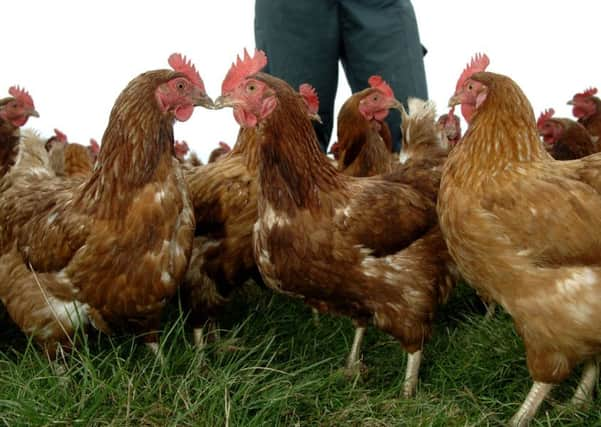Free-range producers welcome '˜pragmatic' bird flu ruling
This article contains affiliate links. We may earn a small commission on items purchased through this article, but that does not affect our editorial judgement.


The proposals will see the current country-wide protection zone maintained until the end of April – but will allow producers who take additional measures to protect their flocks the option of giving their birds access to the outdoors.
Rural economy secretary Fergus Ewing said that while the current prevention zone – which requires all poultry to be housed – remains in place until 28 February, the requirements of the zone will be amended after that point.
Advertisement
Hide AdAdvertisement
Hide AdThe changes are of considerable consequence to many Scottish egg and poultry producers who, without granting their birds access to the outdoors by that date, would have lost their free range status – and waved goodbye to the price premium for their products.
However, unlike England, where the government has been criticised for “drawing lines on the map”, the new Scottish measures will continue to apply across the whole of the country, with no targeting of specific areas.
The order will also see the GB-wide ban on poultry shows and gatherings remain in force, as although there have been no bird flu cases confirmed in domestic poultry or captive birds in Scotland, there have been several cases in England and Wales.
Ewing said: “We do not expect the risk of H5N8 to reduce any time soon, which is why we are extending the Prevention Zone until the end of April.”
Scotland’s chief veterinary officer Sheila Voas said that the risk level remained at “high” for wild birds, and “low to medium” for domestic birds.
She added: “Keepers should start to think about steps they can take now to provide the best biosecurity that they can to protect birds let out on 28 February.”
Biosecurity steps for those wishing to let their poultry out at the end of the month include:
Advertisement
Hide AdAdvertisement
Hide Ad• Ensuring that birds’ feed and water can’t be accessed by wild birds
• Avoiding transfer of contamination between premises by cleansing and disinfecting equipment, vehicles and footwear
• Reducing the movement of people, vehicles or equipment to and from areas where poultry or captive birds are kept
• Implementing effective vermin control around buildings where poultry or captive birds are kept
• Providing wash facilities or dips containing approved disinfectant at key points such as farm entrances and entrances to bird houses
